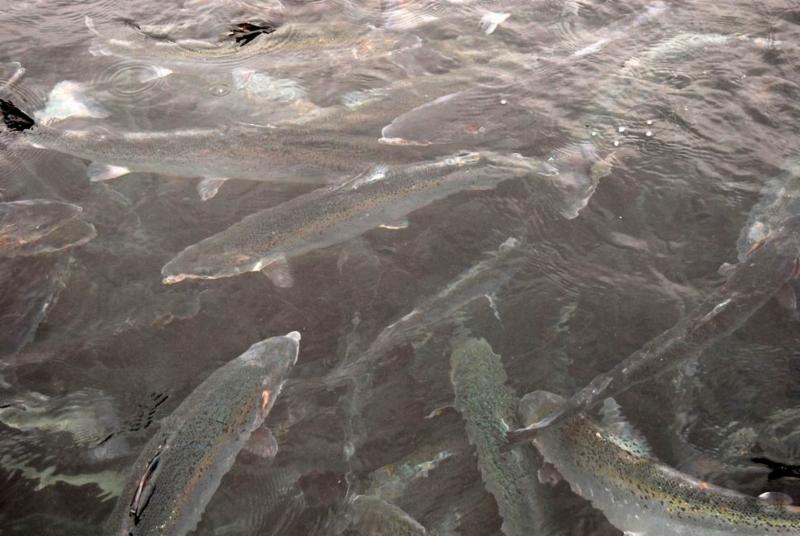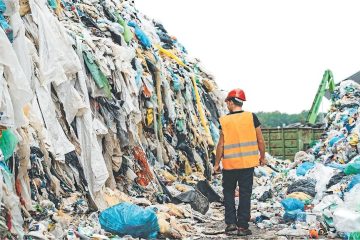Why emissions need to come down immediately and how we can get there.

22 April 2022
The latest Intergovernmental Panel on Climate Change (IPPC) Working Group report plugged a line that we’ve become all-too-familiar with: in order to have a habitable planet, we need emissions to decline fast and that needs to happen now.
However, policymakers the worldover often push steep greenhouse gas reductions off to a five-or-ten year horizon. We simply don’t have that kind of time when it comes to curtailing the climate crisis.
So let’s dig into what immediate emissions reductions are and what implementing them might look like, with expert input from Dr. Hannah Daly from University College Cork and Intergovernmental Panel on Climate Change (IPCC) Professor John Sweeney.
First of all – when we say immediate or short-term emissions cuts, what kind of time frame are we talking about?
It’s pretty much does-what-it-says-on-the-tin territory when it comes to defining them.
These are emissions cuts that can happen at relatively short notice and take place within the course of the next year, according to Dr. Daly.
Right. Why do we need them?
Well – the short answer would be to wave my arms and wildly gesture to literally everything around us.
The longer (and more formal) answer is we need immediate, deep emission reductions now because of the accumulated failures of the past.
If we started to see annual global greenhouse emissions decline decades ago, the general consensus is this transition would have all been a lot easier and smoother and could have unfolded across a longer timescale.
But unfortunately we’ve seen the exact opposite happen. The total amount of carbon dioxide in the atmosphere has increased year-on-year, and the economic rebound following the initial stages of the ongoing Covid-19 pandemic led to a 6 per cent increase in emissions in 2021, according to the International Energy Agency (IEA).
As a result of everything mentioned above, we find ourselves in a situation where global emissions must halve in the next 8 years in order to meet international climate targets.
And one of the key messages from the IPCC this month was that “short-term reductions are the only way ahead for us at the moment”, according to Professor John Sweeney.
And to zoom in on Ireland for a moment, we need immediate and steep emissions reductions each year for the first five-year carbon budget to a tune of 6 per cent, according to Prof Sweeney.
That’s over a full per cent higher than what the Government envisioned for 2021 to 2025, but it’s what’s required to meet with the overall reduction figure for the middle of this decade.
And so what would some immediate emission reducing actions look like?
There’s a couple different ways of doing it – but three things kept cropping up in our research and interviews.
Let’s start with Ireland’s largest emitting sector: agriculture. It takes about a third of our emissions pie, and we’ve seen its contribution increasing according to Environmental Protection Agency (EPA) data.
Cattle emit methane, a potent greenhouse gas that has a warming impact 80 times greater than carbon dioxide in a 20 year period.
A growing number of cattle, particularly dairy, is key when it comes to the increase in the sectors’ emissions – and so both Dr. Daly and Prof Sweeney said stopping that upward climb would be a critical immediate action we could take.
That could be done through a ban on artificial semination and could bring about a quick drop in emissions.
Then we’ve got transport, which is Ireland’s second biggest source of greenhouse gases and is very much driven by our car dependence (excuse the pun).
A sure-fire way to see emissions decline in this sector is by making high-emitting luxury vehicles more expensive in order to discourage their use. Doing so would have benefits far beyond emissions as it would make public spaces safer as well, according to another conversation we had with Dr. Daly.
Taking that point a step further: we need to see people move away from cars and into public and active transport in order see the sectors’ emissions decline, and we can do that by improving infrastructure the country-over.
Finally, we’ve got the issue of energy demand. There are ways individuals can address that in their own capacity right now – by changing their consumption habitats, turning down their heating, working for home, and using public transport where it’s possible, to name a few examples Dr. Daly gave us.
In addition to reducing emissions, these actions can also help ease the cost of living crisis for households who are able to make these changes and they can chip away at Russia’s fossil fuel revenue.
But in order to guarantee that they work in the long-term, these measures need to be brought forward through a “big policy push”, according to Dr. Daly.
We also need to take a serious look at data centres when it comes to energy demand, Prof John Sweeney added, as they are projected to use up 30 per cent of our national grid by 2030.
The bottom line is – there are ways we can take emission-reducing action right now, and though some may consider them unpalatable, they are ultimately “the consequences of putting off action,” Prof Sweeney said.







